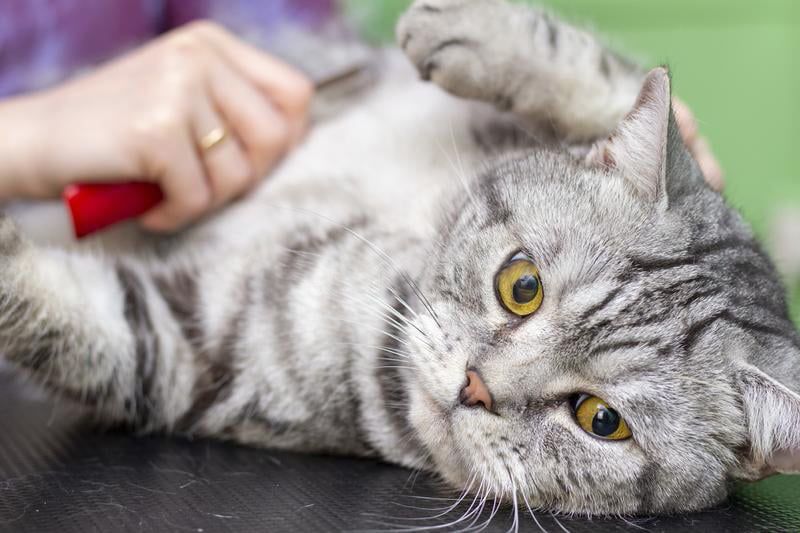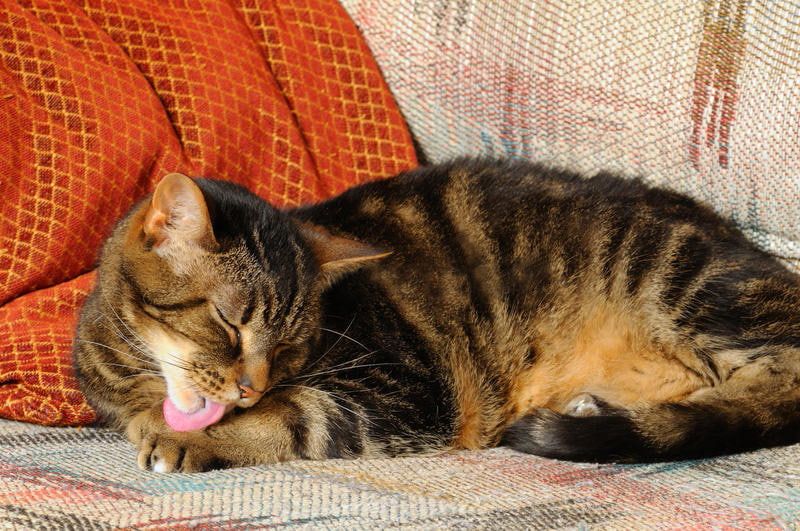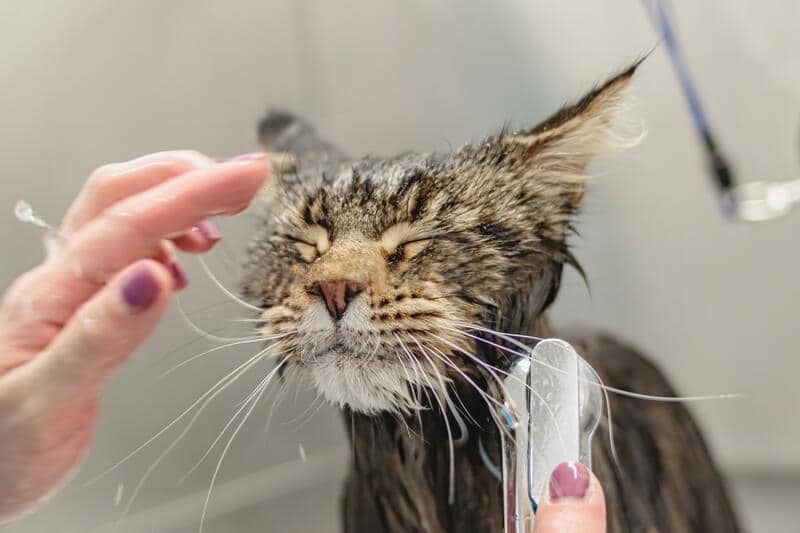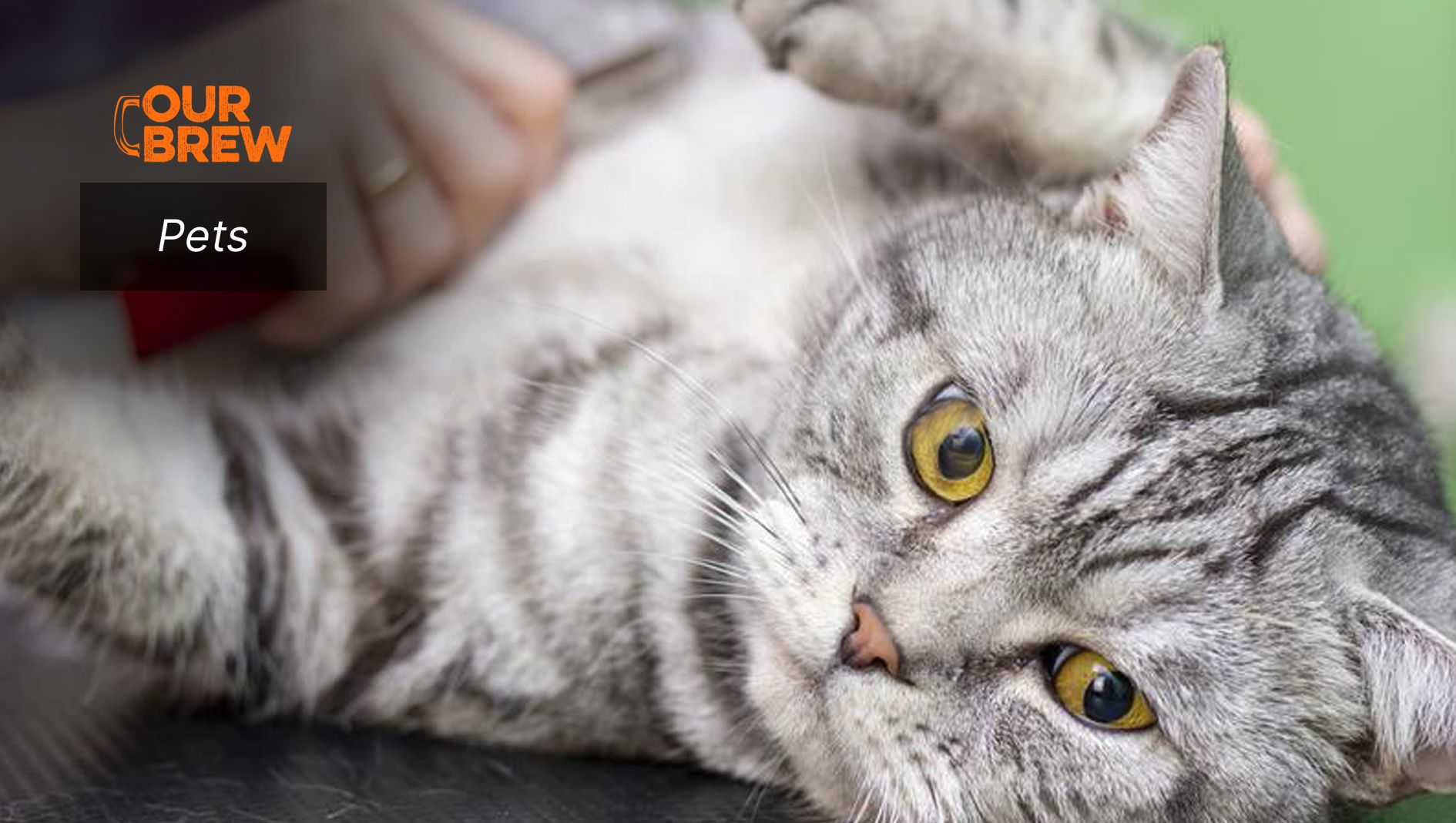by Mariana Burgos
I am a cat person. I particularly love petting and cuddling them. And I love it most when I touch their fur and it is as soft as cotton, and smooth and shiny as silk.

How a cat’s coat and skin look has a lot more to do with general health than just external aesthetics, according to VetMed in “How to Improve Your Cat’s Coat and Skin?.” It is essential to have a strong foundation that includes a good diet, adequate grooming, and efficient flea prevention in order to achieve healthy skin and a lustrous coat.
The majority of the proteins in your cat’s fur make up its coat. The hair of a cat may fall out or turn dry, brittle, and weak if the diet does not include enough high-quality protein.
Flat cells that are closely spaced out make up their skin. Tough membranes made of proteins and lipids surround each cell in the body. VetMed tells us that insufficient nutrient intake can cause cell membranes to deteriorate, which makes it easier for germs and viruses to enter and for water to leak out.
Some tips to help your cat achieve a healthy coat
Cats are renowned for their meticulous grooming practices. But most of the time, they require a little assistance from us. The majority of the time, a simple combing will do the trick, but occasionally bathing and cutting may also be necessary. While bathing and trimming should only be done as often as necessary, you should make a commitment to brushing your cat several times per week (or every day if it has long hair).
Danny MacDonald offers some advice on how to maintain the silky sheen of your cat’s coat. He provides us with eight (8) significant elements to remember in his post, “8 Tips To Restore Shine and Softness To Your Cat’s Coat.”
MacDonald reminds us that nutritional health comes first and foremost. Because cats are carnivores and get their protein from meat, providing them a diet high in protein will help them maintain a healthy, glossy coat. Also, make sure your cat has access to plenty of fresh, clean water at all times.
Although a healthy diet will be sufficient to restore the shine to your cat’s hair, there are several supplements that can make the coat even more glossy. To give your cat’s coat more health and sheen, MacDonald advises incorporating fish oil or cod liver oil into its daily diet.

Your cat’s coat can be cleaned by brushing to remove dirt, dander, dead hair, extra oil, and other debris. This lessens the friction that frequently develops between shedding hairs, which causes breaking. In order to prevent oily residues from appearing on a cat’s coat, brushing also helps distribute oil from the skin.
For cats with short coats, brushing should occur at least twice per week; for cats with lengthy coats, brushing should occur once per day. According to MacDonald, older and overweight cats in particular might benefit from routine grooming to prevent dull coats or dry skin.
The sheen of your cat’s coat can be greatly improved by massage. MacDonald advises us to use a brush to get rid of tangles after softly raking our hands down our cat’s back and distributing their fur with one hand. Every cat, needs massages to encourage healthy hair development and to assist the blood flow in their skin. Additionally, use a soft brush or grooming mitt to massage away any stray fur.
You require a high-quality brush to ensure that your cat’s fur is lustrous. A soft bristle brush or comb made especially for cats with long hair should be chosen based on your cat’s coat type.
According to MacDonald, when you brush your cat, they must never experience any pain. Use a brush or comb to gently remove dead hair by moving it in the opposite direction of the direction of hair development, working your way down your cat’s body from head to tail. After that, brush your hair growing direction.
It is advised to refrain from bathing your cat more frequently than once per month because frequent bathing removes natural oils from their skin. Even while it might not be necessary to bathe your cat as frequently, you should still be cautious about the soap or shampoo you use. The incorrect shampoo can remove the natural oils from your cat’s hair, causing extra harm and making it even more challenging for the fur to grow healthily. Choosing a shampoo with natural ingredients like aloe vera that is of high veterinary grade is what MacDonald advises us to do. Quality counts, even if it is more expensive than mainstream brands. When in doubt about a shampoo choice, always ask your veterinarian.
Your cat may have parasites if they have dry skin and a dull coat. Ticks and fleas can aggravate your cat’s skin, resulting in flaky or itchy skin from excessive scratching, biting, and grooming. As you practice parasite care and prevention for cats, make sure you frequently examine your cat for parasites, advises MacDonald.
Finally, MacDonald brings up important medical conditions including kidney, liver, thyroid, etc. He claims that these ailments may have an impact on your cat’s skin condition. Furthermore, unhealthy coats can also be brought on by stress and anxiety. He reminds us to always consult your veterinarian right away for emergency treatment if you see recurrent skin and coat problems.

About the Author: Mariana Burgos is a freelance artist. She is a solo parent for 16 years now because she is wife to a desaparecido. She and her daughter are animal lovers and are active in advocating not only human rights but the rights of animals as well.
This article also appears in the Manila Standard

If you liked what you just read and want more of Our Brew, subscribe to get notified. Just enter your email below.


Related Posts
Understanding Pets With Special Needs
Mar 03, 2025
Can Cats Eat Basil Leaves?
Feb 20, 2025
The Right Way to Pick Up, Hold, and Carry Your Dog
Feb 17, 2025